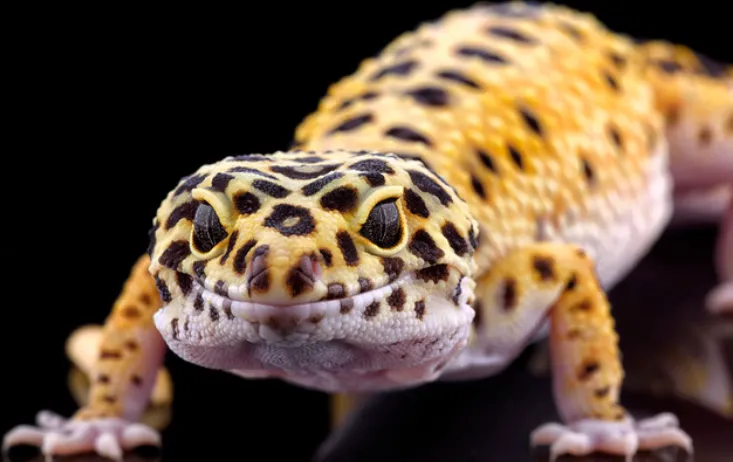
Table of Contents
Scientific Classification
- Kingdom: Animalia
- Phylum: Chordata
- Class: Reptilia
- Order: Squamata
- Suborder: Lacertilia (or Sauria)
- Family: Eublepharidae
- Genus: Eublepharis
- Species: E. macularius
Quick Overview
The Leopard Gecko (Eublepharis macularius) stands out as a favorite reptile pet. Why? Its captivating spotted appearance and friendly nature. Originating from the arid regions of Asia, they’ve adapted impressively to captive environments.
Fast Facts
- Scientific Name: “Eublepharis macularius”
- Lifespan: 6-10 years in the wild; up to 20 years in captivity
- Average Size: 8-10 inches
- Diet: Insectivorous
- Habitat: Arid and semi-arid environments
Did you know?
Unlike most geckos, Leopard Geckos have eyelids, which is quite unusual for lizards. This unique feature allows them to blink and sleep with their eyes closed!
Appearance
Beyond their striking color patterns, which evolve from bands in youth to spots in adulthood, their large, nocturnal eyes are mesmerizing. And, unlike many of their gecko cousins, they lack adhesive toe pads.

Size and Weight
Female Leopard Geckos usually measure between 7.1 to 7.9 inches and weigh around 50 to 70 grams. Males? They’re a tad bigger, ranging from 7.9 to 11 inches and weighing between 60 to 80 grams.
Temperament and Behavior
Active mainly at night, they’re generally gentle, even in captivity. Their ways of communication? A fascinating mix of vocalizations and tail movements.
Fun Fact:
Leopard Geckos have quite the vocal range – from soft squeaks to assertive barks.
Habitat and Distribution
They hail from the arid terrains spanning Pakistan, northwest India, and parts of Afghanistan.
Care Guide
In captivity, a well-ventilated terrarium with a heat source is essential. Since they’re desert animals, they require a warm environment.
So, if you’re considering a Leopard Gecko as a pet, ensure you provide:
- A warm environment, with a temperature gradient between 75-90°F.
- A diet of live insects.
- Regular calcium and vitamin supplementation.
- A dry environment with low humidity.
- Adequate hiding spots in their terrarium.
Diet and Nutrition
Their primary
Fun Fact:
Their diet can diversify with age. While young ones munch primarily on insects, adults might occasionally relish a mouse!
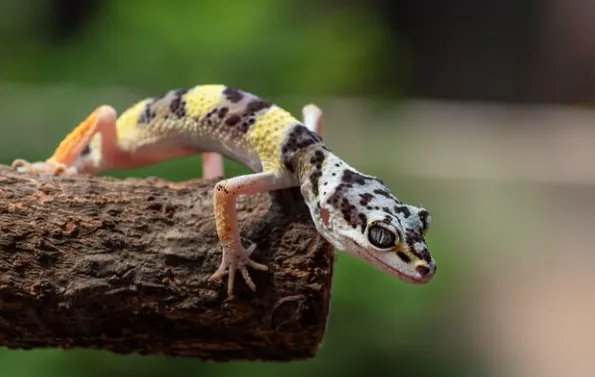
Health and Wellness
Like all reptiles, they have specific health concerns. Watch out for metabolic bone disease and substrate-caused impactions. Regular vet visits, especially with a reptile specialist, can prevent health issues.
Breeding
Breeding season? January through September. Post-mating, females lay one to two eggs, buried in moist terrain. Incubation lasts between 35-89 days, temperature-dependent.
Conservation Status
Though not endangered, habitat destruction and the pet trade pose threats to their wild populations.
Fun Fact:
Shedding isn’t just about outgrowing old skin. They consume it, ensuring nothing’s wasted in nature!
Photo Gallery
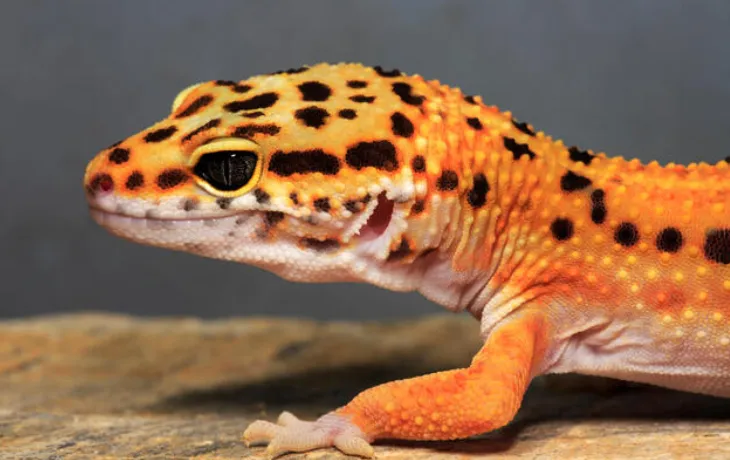

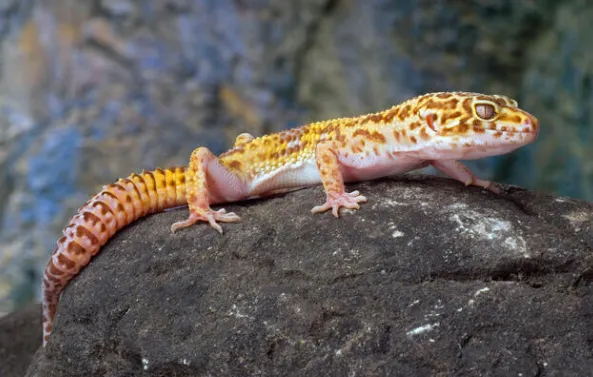
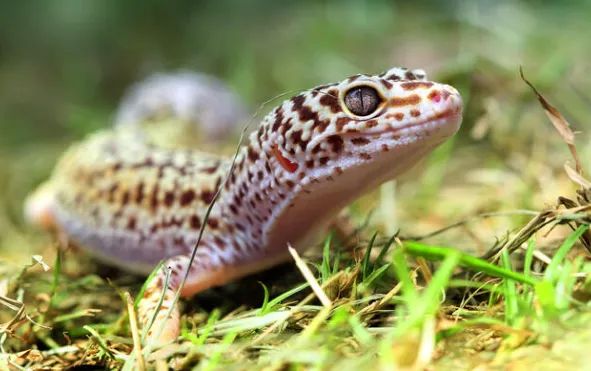
Check out the video below and find out how Leopard Gecko vocalizes!
Related Profiles
Share This Profile:
3 Amazing Facts About Leopard Gecko
- Detachable Tail: When threatened, a Leopard Gecko can detach its tail as a defensive mechanism. The wriggling tail distracts predators, allowing the gecko to escape. Don’t worry, though – it’ll grow back, albeit not quite the same as the original!
- Night Vision Expert: Those big, beautiful eyes aren’t just for show. Leopard Geckos have excellent night vision, making them adept hunters when the sun goes down.
- Color-Changing Thermometer: The color of a Leopard Gecko can change based on its body temperature. Cooler geckos might appear darker, while those basking in warmth can show a lighter hue. It’s nature’s unique way of thermoregulation!
- Enchi Ball Python: A Unique and Stunning Morph of Python regius - March 27, 2025
- Emerald Tree Monitor: The Enigmatic Green Guardian of the Rainforest - March 26, 2025
- The Egyptian Cobra (Naja haje): A Fascinating Serpent - March 25, 2025
